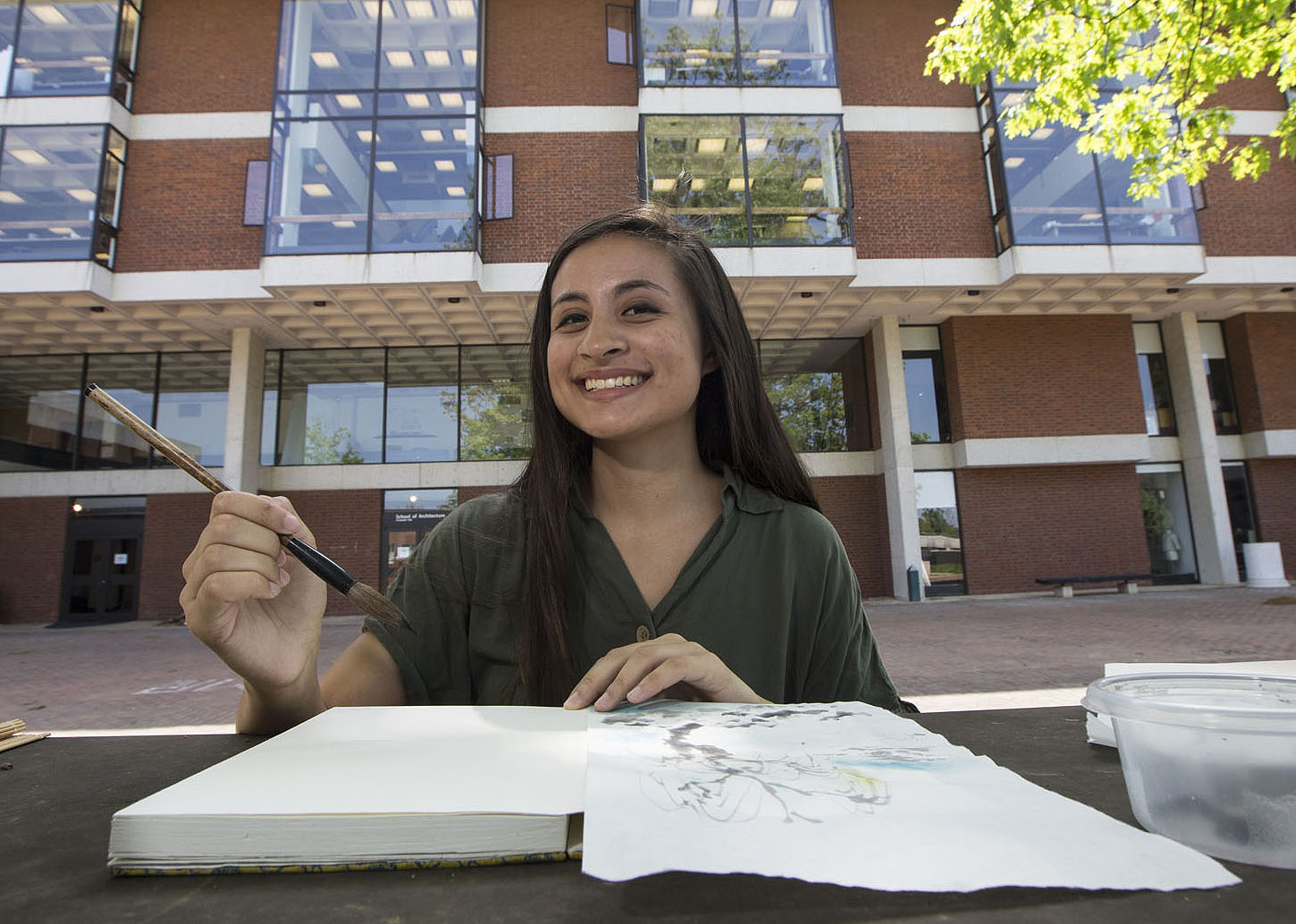Anna McMillen reconnected with her childhood passion for making Chinese Literati art – plain ink paintings designed to express the artist’s spirit – and combined it with her study of architecture. The result was a better understanding of the importance of grasping the essence of an architectural project, she said.
McMillen, 21, of Chesapeake, graduated May 18 with degrees in architecture and urban planning from the University of Virginia’s School of Architecture, as well as minors in architectural history and global sustainability. She studied the ink wash paintings in Shanghai last summer thanks to an Undergraduate Award for Arts Projects program.
The grant, modeled on the University’s successful Harrison Undergraduate Research Awards program, supports creative expression, such as filmmaking, writing and dance, providing students up to $3,000 for projects that expand their expression and showcase artistic accomplishments.
McMillen blended her interests in Literati painting and architecture.
“By viewing the subject of what I’m painting, usually landscape and nature, in a different light, I can integrate this into my design thinking as well, making me more aware of the site environment and detailed components of the landscape,” she said. “A design project usually has an overall narrative that you follow through with each diagram and drawing. This is similar to Literati paintings, where the artist’s goal is to express in a cohesive sense the nature and environment they have experienced.”
Literati paintings are more about self-expression than technical expertise.
“The core of Literati paintings is the idea of an amateur artist exploring his or her spiritual side and coming to self-realization,” she said. “This is a never-ending pursuit that I will continue on past this project – to use paintings as a way to express my inner thoughts and ideas of what is around me.”
McMillen thinks it is important to effectively express an idea in its minimal form, and Literati painting has helped her simplify how she sees.
“It has also helped me in my architecture projects to understand the importance of diagramming and grasping the essence of a project,” she said.
She displayed these simplified forms this spring, when she shared her work at the revival of Public Day, a 19th-century University tradition.
“The role of the University in the commonwealth, in the nation and globally, depends on the sharing of what we really do as a university with the public,” said Bill Sherman, founding director of OpenGrounds, which hosted the Public Day.
McMillen, who spent 12 years living in China and returns there frequently, plans to work in China as an architect.
“China has really blossomed in the past years and I am excited about moving back, as I believe I can help shape a new urban environment for the better,” she said. “I am aware of the culture and way of living, and this would influence the way I would approach design there.”
McMillen sees architecture as more than a career choice.
“It is a way of thinking and a way of life,” she said. “This is very similar to how, historically, Literati paintings were not just a style of painting, but it was the way of life for the scholar. Studying architecture has shaped the way I view my surrounding environment, and I hope I can help change what this looks like for the future.”
Media Contact
Article Information
May 23, 2014
/content/architecture-graduate-uses-ancient-painting-style-shape-modern-buildings

